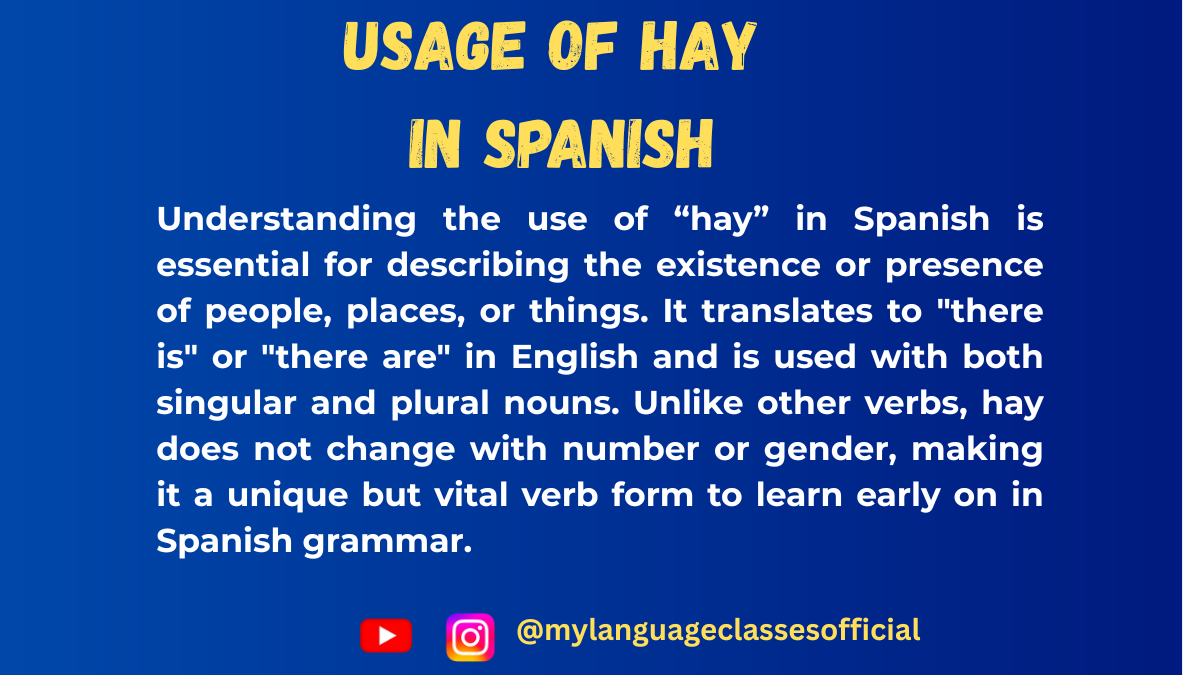Your cart is currently empty!
Tag: use of hay in Spanish

Use of Hay in Spanish
Use of Hay in Spanish
The verb “hay” in Spanish is one of the most commonly used and versatile expressions. It comes from the verb “haber” and is used to express the existence or presence of something. Learning how to … Read more

